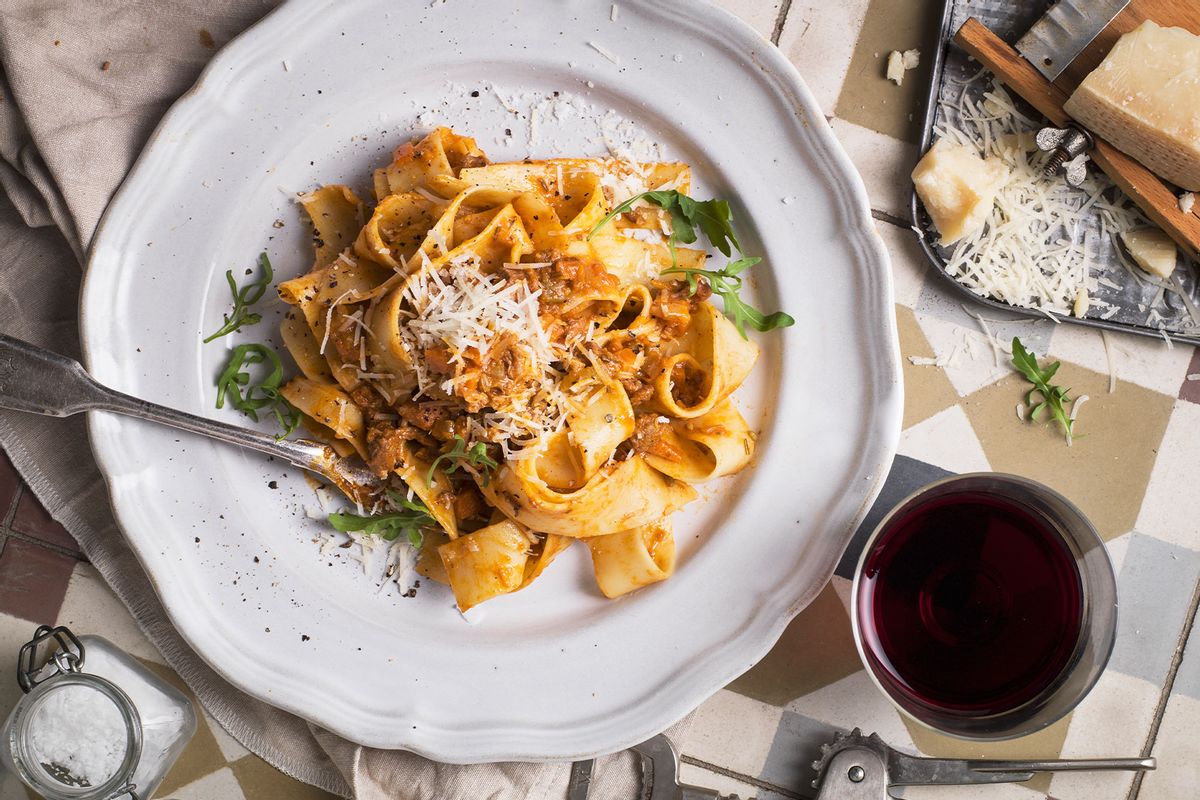Believe it or not, the very best summer pasta sauce starts with yellow squash

I’ve never been a huge fan of yellow summer squash, dismissing it as dull with its tender skin and watery flesh. However, over the past week, I’ve worked on perfecting a pasta that uses caramelized yellow squash as the base of a rich, slightly sweet sauce.
As I wrote in an essay about summer burn-out and summer squash, this recipe started as a throw-together meal. I had most of a sleeve of bucatini, a lone strip of bacon, half an onion and some shaved parmesan. I dug into the crisper drawer, pushing aside prep bags of cabbage and kale. There was my annual summer squash purchase — two yellow straight-necks, still fresh from my last supermarket trip.
Surveying the spread of ingredients, I thought back to two pasta recipes I’ve enjoyed making: Ali Slagle’s caramelized zucchini pasta and Alison Roman’s caramelized shallot pasta. If zucchini can caramelize, why not yellow squash, especially if there are some onions in the pan to help it along the way?
I put a few glugs of olive oil and a pat of butter in a skillet. While it melted, I grated the squash and roughly chopped the onions. Then I let the mixture cook over low heat, pushing it with the back of a wooden spoon around the skillet every 10 minutes or so. Within 20 minutes, the squash had transformed. Its pliable yellow and white shreds had deepened to a honey color, and what vegetal sweetness they have was notably deepened.
Within 40 minutes, I was eating the caramelized squash out of the pan with my spoon.
When mixed with bucatini (you can use any pasta you like, of course, but bucatini is a perennial favorite here at Salon Food) and some reserved pasta water, it’s the ideal summer pasta sauce — especially when topped with chives, a little shaved parmesan and crispy crumbled bacon.
Caramelized Yellow Summer Squash Pasta with Bacon and Butter
Yields
4 servings
Prep Time
10 minutes
Ingredients
- 2 small yellow summer squashes, grated or roughly chopped
- 1/2 small white onion, roughly chopped
- 2 to 4 teaspoons red pepper flakes
- 4 tablespoons butter, divided
- 2 tablespoons olive oil, plus extra if needed during caramelization
- 12 ounces bucatini
- 1/4 to 1/2 cup whole-milk Greek or plain yogurt
- Salt and pepper to taste
Optional: Chives, shaved parmesan, crispy crumbled bacon
Directions
- In a large skillet, melt 2 tablespoons of butter. Add 2 tablespoons of olive oil and red pepper flakes to taste, followed by the grated squashes and chopped onion. Sprinkle the mixture with salt, bring the heat down to medium-low and buckle up. Caramelizing is a long, slow business. Be prepared to pop on a movie or podcast while you wait.
- Over the course of 40 minutes to an hour, stir the squash mixture every 10 minutes or so, making sure to scrape up any browned bits on the bottom of the pan. If the squash starts to look dry, add another splash of olive oil. Remove the mixture from the heat once the squash and onions are both jammy and sufficiently browned.
- Meanwhile, cook the bucatini according to the package directions, making sure to reserve about 1 cup of pasta water.
- Add the pasta to the skillet with the squash mixture, as well as the remaining butter, 1/4 cup of whole-milk yogurt and a splash of reserved pasta water. Bring the mixture up to medium-low heat and adjust the sauce to your desired consistency. For a thicker sauce, add more yogurt; for something a little thinner, add more pasta water. Until you’re satisfied, adjust 1 tablespoon at a time, then season with salt and pepper.
- To serve, feel free to eat as-is, or top with chives, shaved parmesan and crispy crumbled bacon. To veganize this dish, simply use plant-based butter and yogurt, then top your bowl with chives and crispy breadcrumbs.
Want more great food writing and recipes? Subscribe to Salon Food’s newsletter.
This recipe originally appeared in Salon Food’s weekly food newsletter, The Bite. Be sure to subscribe so you don’t miss special recipes, how-to’s and essays.
Read more
about all things pasta

